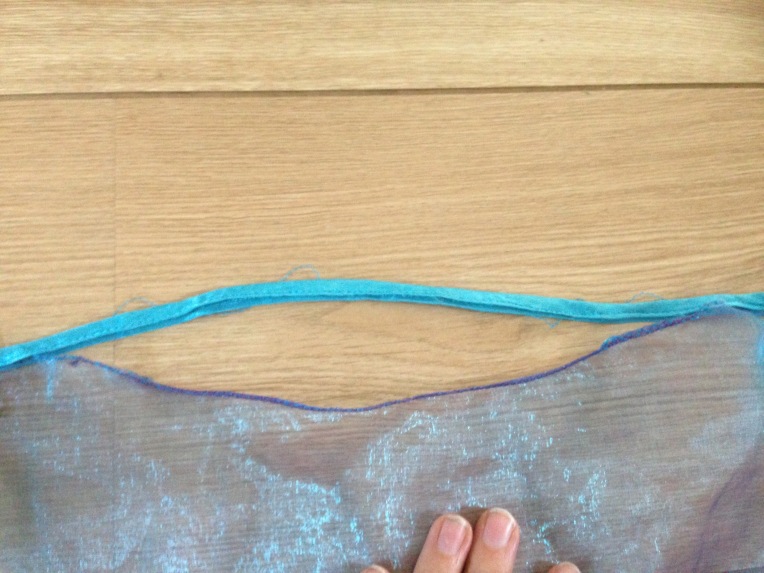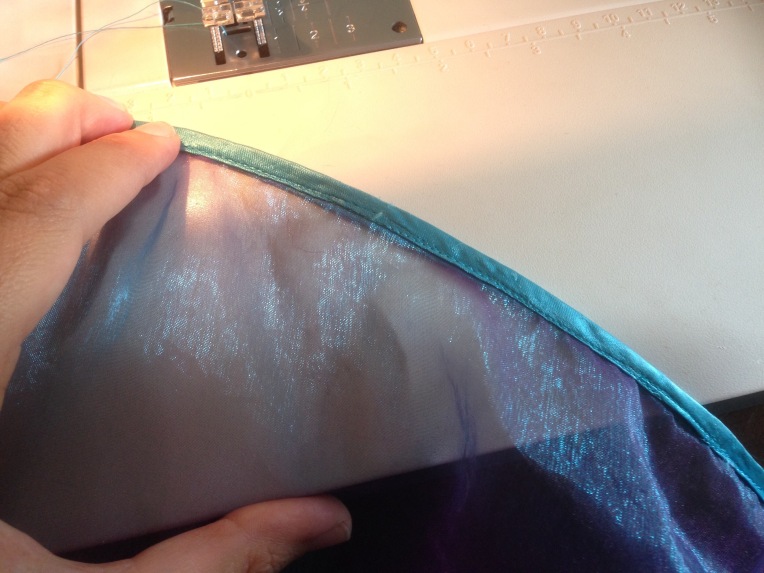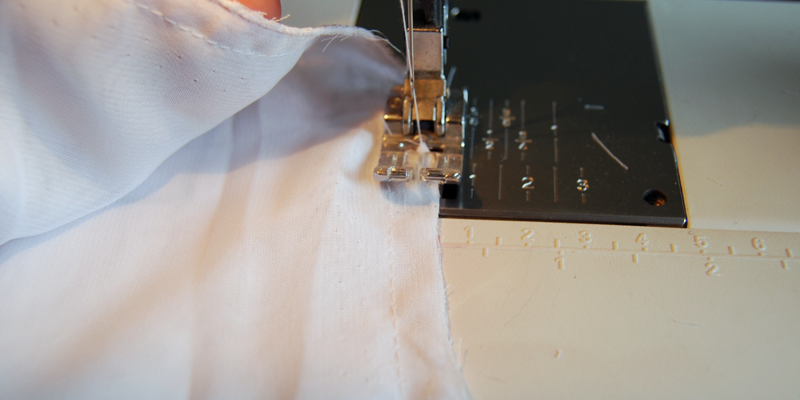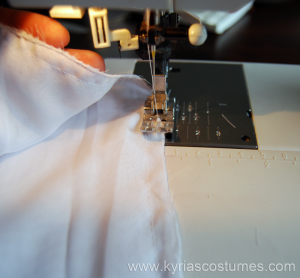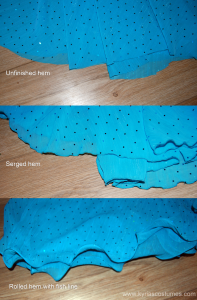Summer is great for all the projects that are lying around and need to be done. Often these projects don’t need much time or effort but somehow they just don’t happen. I decided to tackle my pile of unfinished projects one by one and my first project was a red beledi dress that I bought five years ago. It’s a troupe costume and each troupe member converted the sleeves to a different style.

I wore it as is, without finishing the edges of the sleeves or beading the sleeves. As a result, I always felt a bit uneasy when wearing the dress. Pulling it out of the pile I gathered my materials and got to work. It took me about three hours to finish the edges and now I can put it back in the closet, knowing that it will be ready for the next performance.
While working on the edge, I took some pictures so I could share this technique with you. It is a looped fringe with a big sequin in the middle, that adds sparkle to the edge, weight to the sleeve so it drapes better and a bit of extra movement.
Supplies
Seed beads
Cupped sequins (I recommend higher quality laser holographic sequins because they last a long time.)
Paillettes (I used holographic pailettes app 20 mm in diameter)
Thread (For durability, use extra strong thread)
Needle (as small as possible, to get through the seed beads)
Technique
Start by threading your needle and anchoring the thread to the fabric. Or, in different words: thread your needle and tie a knot in the thread. Choose your starting point and get your needle through the fabric from the back to the front, then to the back of the fabric again. Secure the end. Stick your needleback to the front and let’s get started on the beading!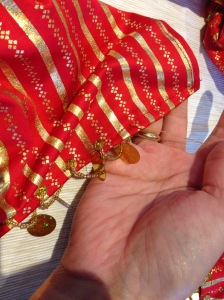 Add to your thread: one cupped sequin (make sure the cup sits with the bottom towards the fabric), fifteen seed beads, one pailette and then fifteen seed beads again. It looks like this:
Add to your thread: one cupped sequin (make sure the cup sits with the bottom towards the fabric), fifteen seed beads, one pailette and then fifteen seed beads again. It looks like this:
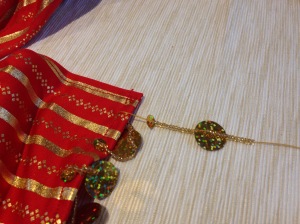 Pick a point app 1″/2,5cm to the right of your starting point, and stick the needle through from the bottom of the fabric to the top. Tug lightly on the thread to tighten the beads and sequins.
Pick a point app 1″/2,5cm to the right of your starting point, and stick the needle through from the bottom of the fabric to the top. Tug lightly on the thread to tighten the beads and sequins.
 I like to knot my beading as often as possible, so I make a knot at this point to secure the loop into place. If the beading breaks, I will only loose one loop of fringe, not a whole row.
I like to knot my beading as often as possible, so I make a knot at this point to secure the loop into place. If the beading breaks, I will only loose one loop of fringe, not a whole row.
Rinse, repeat.
Once the whole edge is finished, the effect is a shiny, beaded edge with a lovely dangling paillette in the center of each fringe. This technique is very forgiving so it looks rather uniform even when the distance between the starting point and the end point is more or less than 1″/2,5 cm.
I am a professional bellydancer, costume-a-holic and dance studio owner living in the Netherlands. My biggest passion is teaching and performing bellydance and I intent to continue doing so for quite some time! I am a teacher at the online Belly Dance Business Academy, where you can find courses and workshops to help you grow your belly dance business. If you like to be kept in the loop, please like Kyria Bellydance on Facebook or follow me on Twitter. Leave your questions or comments in the box below, or let me know through Facebook.



 At the end of the day when I am done with work, I have to take the same train back home. That’s another fifty minutes of costuming. The tricky bit is preparing workthat can be done in the train. For example, bringing a lot of supplies with me is out of the question. Bringing something with me that needs a lot of workspace is also a big no no. The tables are narrow and small and often I can’t get a seat at the window during rush hour.
At the end of the day when I am done with work, I have to take the same train back home. That’s another fifty minutes of costuming. The tricky bit is preparing workthat can be done in the train. For example, bringing a lot of supplies with me is out of the question. Bringing something with me that needs a lot of workspace is also a big no no. The tables are narrow and small and often I can’t get a seat at the window during rush hour.



